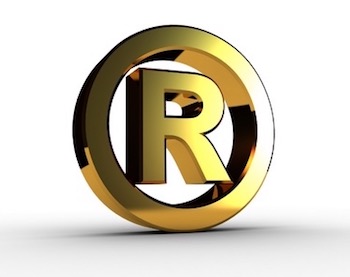 Where a company has a complicated ownership structure – perhaps hundreds or even thousands of legal entities ultimately under a single parent company – the trademark practitioner may colloquially refer to all of these entities collectively as “the client.” But when determining ownership of the trademarks within that corporate structure by the client, careful consideration should be given to exactly which legal entity owns or will own the new mark, especially if the owner is not to be the parent entity within the company’s organizational structure. While the business will naturally have its own thoughts as to which entity should own the mark, the practitioner’s job includes ensuring that decision is formed consistent with the strictures imposed by trademark law.
Where a company has a complicated ownership structure – perhaps hundreds or even thousands of legal entities ultimately under a single parent company – the trademark practitioner may colloquially refer to all of these entities collectively as “the client.” But when determining ownership of the trademarks within that corporate structure by the client, careful consideration should be given to exactly which legal entity owns or will own the new mark, especially if the owner is not to be the parent entity within the company’s organizational structure. While the business will naturally have its own thoughts as to which entity should own the mark, the practitioner’s job includes ensuring that decision is formed consistent with the strictures imposed by trademark law.
The Board’s Noble House Decision
Section 5 of the Trademark Act provides in part that “[w]here a registered mark or a mark sought to be registered is or may be used legitimately by related companies, such use shall inure to the benefit of the registrant or applicant for registration, and such use shall not affect the validity of such mark or of its registration…” (emphasis added). While one might believe that a parent company’s use of a trademark owned by a wholly-owned subsidiary is adequate under this provision, the Trademark Trial and Appeal Board’s recent decision in Noble House Home Furnishings, LLC v. Floorco Enterprises, LLC, 118 U.S.P.Q.2d 1413 (T.T.A.B. 2016), illustrates the problem that may arise when a mark is used by the trademark owner’s parent company, and no trademark license or other measure is put into place to control the nature and quality of goods/services on which the mark is used.
Briefly stated, in that case Noble House petitioned to cancel Floorco’s trademark registration for NOBLE HOUSE, for furniture, on the ground that Floorco had abandoned the mark. Noble House made a prima facie showing of abandonment by demonstrating three consecutive years of nonuse, but Floorco sought to rebut that showing by pointing to ongoing marketing efforts involving the mark NOBLE HOUSE. Unfortunately for Floorco, however, the evidence showed that:
- it was not Floorco that marketed furniture under the mark during the relevant time period, but rather its parent company, Furnco International Corporation;
- Furnco, and not Floorco, was the entity that controlled the nature and quality of the furniture sold under the mark NOBLE HOUSE;
- there was no agreement (e.g., trademark license) between Floorco and Furnco concerning the mark; and
- Furnco controlled the operations of Floorco and had authority over all major decisions made by Floorco.
In light of these findings, the question to be decided was whether Floorco could rely on use by its parent company, Furnco as use by a “related company”. While under general corporate principles, a parent and subsidiary are considered related companies, Section 45 of the Trademark Act defines the term “related company” specifically as to trademark law as “any person whose use of a mark is controlled by the owner of the mark with respect to the nature and quality of the goods or services on or in connection with which the mark is used” (emphasis added).
Applying Sections 5 and 45 to the factual findings, the Board held that as Floorco could not show it controlled Furnco’s use of the mark with respect to the nature and quality of the goods, it could not rely on Furnco’s use to rebut the claim of abandonment. As a result, the Board granted the petition cancelling Floorco’s registration.
The Board offered the following guidance:
The essence of related-company use is the control exercised over the nature and quality of the goods or services on or in connection with which the mark is used. . . .
In most situations, the inherent nature of the parent’s overall control over the affairs of a subsidiary will be sufficient to presume that the parent is adequately exercising control over the nature and quality of goods and services sold by the subsidiary under a mark owned by the parent, without the need for a license or other agreement. If there is any doubt on that score in a particular situation, it can be made clear by a proper trademark license agreement between parent and subsidiaries. . . .
However, in this case, Furnco International Corporation, the parent company, authorized its subsidiary, [Floorco], to be the owner of the registration at issue. . . . Furnco International Corporation chose to structure its business using a legally distinct subsidiary, which counts as a “person” under [Section 45]. Such a business structure may offer some advantages, but it also comes with some strictures, and the existence of a separate and distinct legal entity (e.g., in this case a limited liability company) cannot be turned on or off at will to suit the occasion.
118 U.S.P.Q.2d at 1421-22.
Lessons Learned
Trademark practitioners should be mindful they have a role to play in guiding ownership decisions where the business may wish a particular legal entity to own the mark (for any number of rational business reasons) but that selection may conflict with the requirements of trademark law and ultimately impact the validity of the company’s trademarks. For example, subsidiary A should not be the owner if parent B is to be the entity that uses the mark, absent some form of control by subsidiary A over the nature and quality of the goods sold by parent B under the mark. A trademark license could be employed in such situations – for example, from A to B – but it should be noted that there must be some efforts by subsidiary A to maintain quality control.
Generally speaking, from a trademark law perspective, it may be wise to have the parent own all trademarks. This will tend to minimize successful ownership-based challenges in the U.S. and perhaps other countries. And although beyond the scope of this article, ownership in a single entity will also tend to avoid certain related issues, such as having one subsidiary’s application blocked by a registration owned by another subsidiary in a country whose trademark office is not as permissive as the USPTO in terms of showing “unity of control” to overcome such refusals. Along the same lines:
Global enforcement of a mark owned by a hodge-podge of different local subsidiaries, rather than ownership in the parent, can be difficult as it will be necessary to prove a relationship between all of the different local owners of the mark. . . . For this reason alone, it is usually the best solution to select one entity to own all trademark registrations world-wide, often the name of the parent company or – for tax reasons – a holding company.
B. Brett Heavner & Marcus H. H. Luepke, Avoiding Trademark Pitfalls in the “Land of the Unlimited Possibilities”: The Top 15 Mistakes of Foreign Applicants in the U.S. Trademark Office, 98 Trademark Rep. 974, 980 (2008).
At bottom, the basic purpose of a trademark is to identify source. If the purported owner is neither using the mark itself nor controlling the nature and quality of the goods/services offered under the mark by its affiliated companies, the mark is not in fact identifying the “owner” as the source of the goods and services. As a result the use by the affiliated companies does not support the purported owner’s asserted ownership. Practitioners should anticipate these issues and strongly consider having the parent at the apex of the client’s organizational structure own all trademarks. If that is not feasible or undesirable for some reason, then trademark licenses – from owner to user – should be put into place for any user not a subsidiary of the owner.
As an interesting postscript, the USPTO’s Trademark Manual of Examining Procedure states, “Related-company use includes situations where a wholly owned related company of the applicant uses the mark, or where the applicant is wholly owned by a related company that uses the mark.” T.M.E.P. § 1201.03(b) (emphasis added). To the extent the italicized portion of that sentence is not tautological – related-company use will of course include a related company that uses the mark – and is intended to suggest that use by the parent of its subsidiary’s mark is necessarily use by a “related company,” Noble House appears to call that into question. One commentator has suggested “[t]his language may simply be an artifact from the original language of the definition of ‘related company’ [prior to the Trademark Law Revision Act of 1988], and may no longer have a statutory basis.” Pamela Chestek, Control of Trademarks by the Intellectual Property Holding Company, 41 IDEA 1, 16 n.74 (2001).

![[IPWatchdog Logo]](https://ipwatchdog.com/wp-content/themes/IPWatchdog%20-%202023/assets/images/temp/logo-small@2x.png)


![[Advertisement]](https://ipwatchdog.com/wp-content/uploads/2024/04/Patent-Litigation-Masters-2024-sidebar-early-bird-ends-Apr-21-last-chance-700x500-1.jpg)

![[Advertisement]](https://ipwatchdog.com/wp-content/uploads/2021/12/WEBINAR-336-x-280-px.png)
![[Advertisement]](https://ipwatchdog.com/wp-content/uploads/2021/12/2021-Patent-Practice-on-Demand-recorded-Feb-2021-336-x-280.jpg)
![[Advertisement]](https://ipwatchdog.com/wp-content/uploads/2021/12/Ad-4-The-Invent-Patent-System™.png)







Join the Discussion
No comments yet.